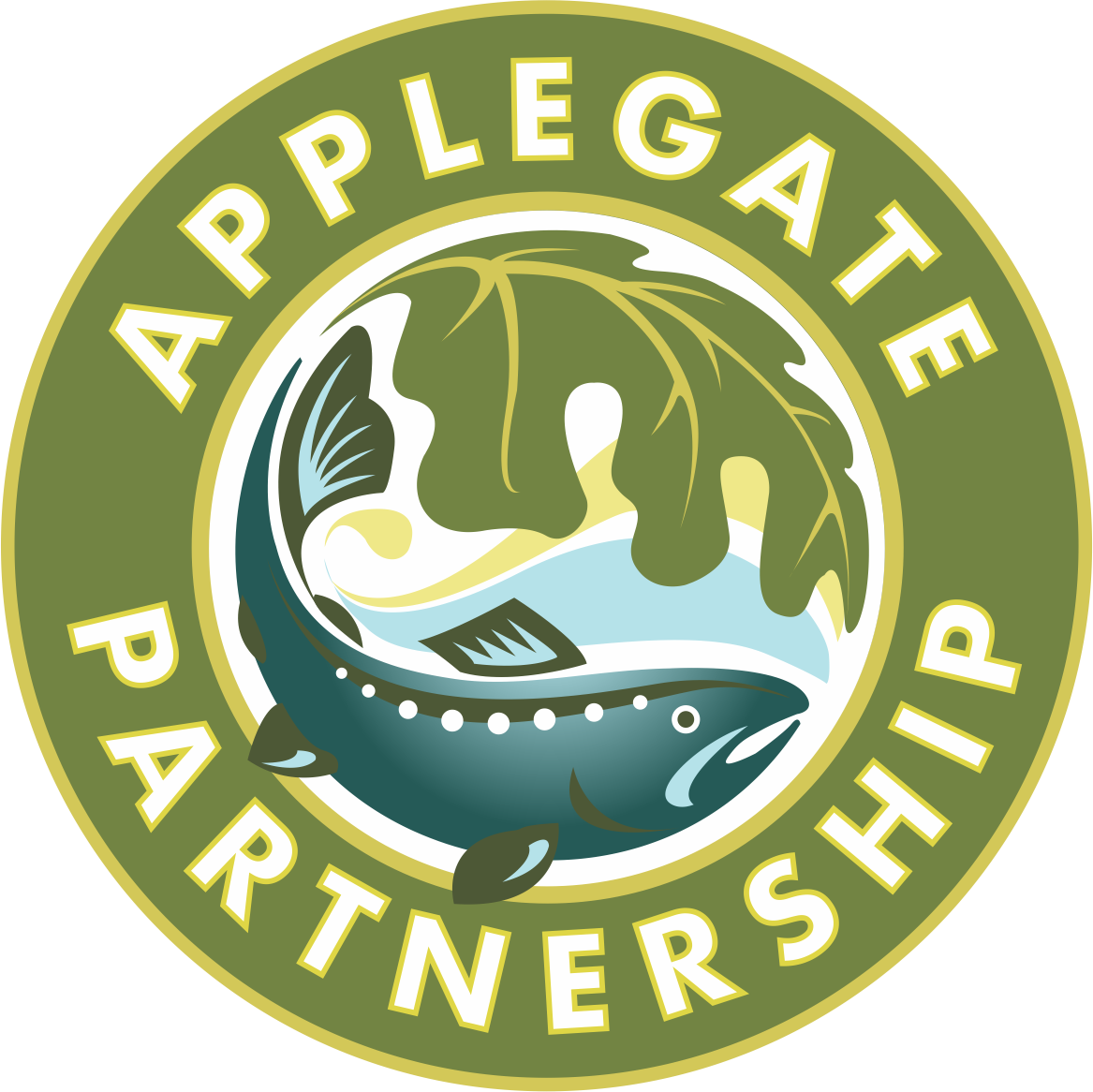Wildfire Risk in the Applegate: Partnership Leads to Protection
This article was published in the Summer 2025 Edition of the Applegater.
View the original article here.
By Nathan Gehres
With another fire season on the horizon, residents of the Applegate are working hard to prepare, as are the local organizations and agencies. The elevated wildfire risk is increasingly evident, as homeowner’s insurance becomes unaffordable, summertime smoke disrupts plans and forces residents indoors, and anxiety rises with the temperatures. Big challenges require robust partnerships, such as those being forged in the Applegate.
Collaboration is essential, as the diversity that makes the Applegate unique also complicates the implementation of large projects. A checkerboard of private and public lands comprises our valley that spans two states, three counties, and three fire districts. Permitting and other requirements vary across ownerships, making pooling resources the only viable way to reduce wildfire risk across the landscape in an “All-Lands” approach, since wildfires don’t recognize property boundaries.
The Applegate Valley Fuels Management Taskforce (AVFMT) is a collaborative effort between the Applegate Partnership & Watershed Council (APWC) and the Applegate Valley Fire District (AVFD). This partnership has developed a wildfire risk reduction program to provide technical and financial assistance for landowners.
APWC brought together a diverse coalition of non-governmental organizations, agencies, and community-based partners in developing the Upper Applegate All-Lands Wildfire Resiliency Project (UAAWRP), securing $2 million in funding through the Natural Resource Conservation Service (NRCS) Conservation Implementation Strategy (CIS). The NRCS, a federal agency, works with private landowners to improve soil, water, and natural resource conservation on working lands. Additional funding for the UAAWRP has been secured by AVFMT through a $2 million grant from the US Department of Agriculture, and hundreds of thousands in funding from Oregon Department of Forestry (ODF) and Bureau of Land Management (BLM) grants. The project is designed to reduce hazardous fuels on private lands, build landscape-scale wildfire resilience, support the economy by employing local contractors, and contribute to long-term ecosystem health and habitat connectivity across the valley.
The ODF Southwest Oregon District is nearing the completion of a three-year effort through the Western State Fire Managers grant to reimburse landowners for defensible space creation, fuels reduction treatments, and improvement of access/egress routes on private lands.
Firebrand Resiliency Collective’s Ready NOW Program (Neighborhoods Organized for Wildfire) is dedicated to empowering communities in wildfire-prone areas to prepare for and mitigate wildfire risks. Firebrand has partnered with AVFMT to establish and support new Firewise USA® communities, conduct home wildfire risk assessments, and incentivize home hardening actions to align with broader defensible space efforts.
The Rogue Forest Partners (RFP), a partnership of four federal (NRCS, USFS, BLM, USFWS), two state (ODF and OSU Extension Service), and four nonprofit organizations, has worked for the last five years on the Upper Applegate Watershed (UAW)project, completing over 17,000 acres of understory restoration thinning since 2019, with an additional 8,700 acres of pile and underburning. These treatments were strategically located near private lands and roadways. In Williams, RFP completed 278 acres of understory restoration treatments.
The Southern Oregon Forest Restoration Collaborative (SOFRC), a member of the RFP, completed the Prescription for Safety Project (P4S) with BLM and ODF funding that treated fuels on 242 acres spread across 31 properties along Sterling Creek, Little Applegate, and Humbug Creek Roads, to help secure egress and ingress for residents and firefighters.
The BLM has several active and planned projects in the Applegate Valley, aside from those already listed above. The Bear Grub Project calls for 3,381 acres of small diameter thinning and hazardous fuels reduction, 898 have been completed, with another 802 planned for 2025. The Strategic Operations for Safety (SOS) Project with planned fuels treatments targeted near private lands is slated to start in late 2025.
In addition to the RFP project listed above, the USFS has plans to utilize prescribed fire to enhance the treatments in the UAW and to protect the US Army Corps of Engineers infrastructure around the Applegate Dam. USFS is also developing the Yellowjacket Project to connect the fuels reduction work in the UAW to the previous work around Ashland and RFP’s West Bear Project, near Jacksonville.
Several organizations in the Applegate are proactively working to decrease the threat of uncharacteristically severe wildfire, because doing nothing is not an option.
Questions? Please contact:
Nathan Gehres
APWC Habitat Restoration Project Manager
nathan@apwc.info
(541) 890-9989
